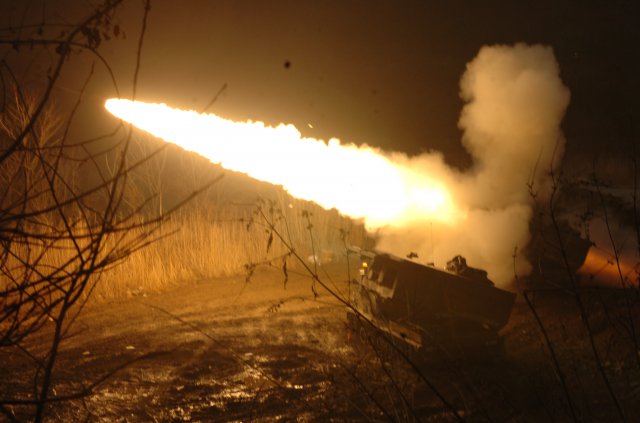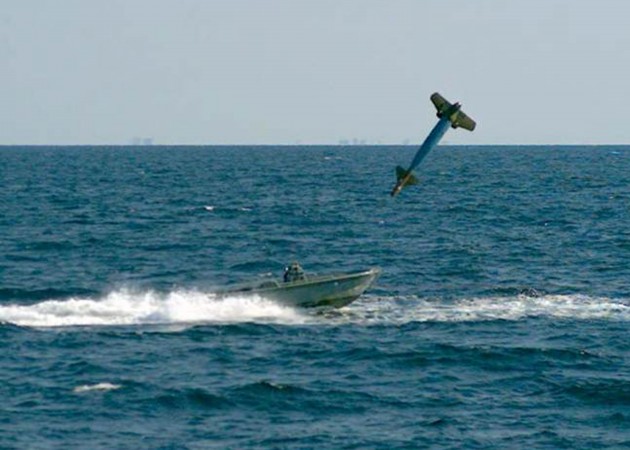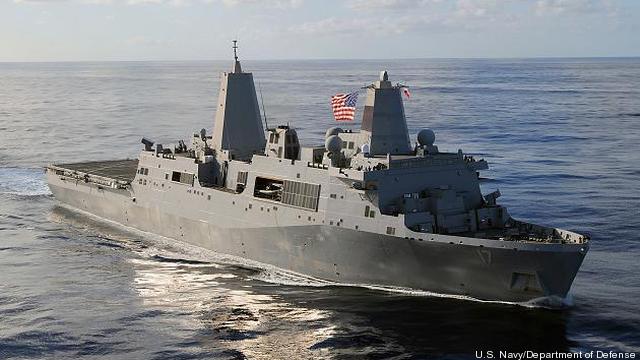
Army Multiple Launch Rocket System
WASHINGTON: Tucked into the corners of the House’s huge draft defense bill are the seeds of a new way of warfare. It’s an approach aimed at adversaries armed with lots of long-range missiles, such as Russia and China. If the Pentagon takes the money and suggestions in the House Armed Services Committee’s draft National Defense Authorization Act, it will place offensive missiles on Navy amphibious ships and Army shore batteries. It’ll have new missile defenses too: land-based railguns shooting electromagnetically propelled slugs at seven times the speed of sound.

Army Land-Based Missiles
The most dramatic measure is a $5 million addition for “Examination of Army land-attack and anti-ship capability.” The Army doesn’t currently have “anti-ship capability,” but China and Iran rely heavily on shore-based Anti-Ship Cruise Missiles (ASCMs) to counter American naval superiority. House seapower subcommittee chairman Randy Forbes has long urged the Army to turn the tables with ASCMs of its own, which could counter Chinese invasions of our allies’ islands and harass Chinese naval sorties into the Pacific. The proposal got a positive response from the Senate, then-Defense Secretary Chuck Hagel, and Army intellectual leaders like Lt. Gen. H.R. McMaster, but we’ve seen little actual progress — till now.
The Army has an effort already underway, although it’s rarely discussed and this bill is the first we’ve heard a formal name. The HASC tactical air-land forces subcommittee mark-up “supports the Army’s Land-Based Anti- Ship Missile (LBASM) effort.” Run out of Research, Development, & Engineering Command (RDECOM), the project is funded for future live-fire testing, including launches from the MLRS and HIMARS mobile rocket launchers. Part of the House’s $5 million would presumably boost this program. While that money won’t buy a lot of missiles, it can make a major difference in an initiative at an early and vulnerable stage — as can congressional support for a program that’s counter-cultural for its parent service.
Another part of the $5 million would go to “Army land-attack…capability.” Attacking ground targets at a distance is what MLRS and HIMARS are currently for, but they are outmatched by Russia rocket artillery, and their longest-range projectile is the upgraded ATACMS missile with a maximum reach of about 188 miles (300 km). The Army is exploring a Long-Range Precision Fires (LRPF) missile with a 313-mile (500 km) range. That’s a figure set not by tactics or technology but the limits of the Intermediate Nuclear Forces (INF) treaty, which Russian violations have arguably rendered void. Like land-based anti-ship missiles, long-range land-based ground attack missiles are a major part of our adversaries’ arsenals which we lack.

The amphibious ship USS San Antonio, LPD-17.
Upgunning Amphibs
The HASC mark doesn’t neglect Navy firepower, either. It orders a study of installing multi-purpose missile tubes — specifically the Mark 41 Vertical Launch System (VLS) — on Navy amphibious ships normally used to transport Marine Corps forces specifically the LPD-17 San Antonio class. There are 11 LPDs already in service or under construction, with a 12th funded elsewhere in the draft NDAA, and a cut-down LPD design will be the basis for the next class of amphibious ship, the L(X)R, so that’s easily two dozen hulls that might gain offensive firepower they currently lack. LPD builder Huntington Ingalls Industries — the biggest source of manufacturing jobs in both Virginia and Mississippi — has also proposed other LPD variants as well.
The beauty of the Vertical Launch System, and the reason it’s standard on Navy cruisers and destroyers, is that its tubes can accommodate a wide variety of offensive and defensive missiles to hit land targets, ships, aircraft, or enemy missiles. While amphibs with VLS wouldn’t have the defenses or electronics to join the main battleline, the HASC bill notes they could hang back and fire long-range shots using targeting data transmitted from Navy aircraft and other vessels — a technique called “engage on remote.” Putting more offensive (and defensive) firepower on a wider variety of vessels to multiply an enemy’s problems is also part of the Navy’s push for what it calls Distributed Lethality.
Army & Navy Railguns
If VLS is both offensive and defensive, while land-based anti-ship missiles and long-range surface-to-surface missiles are purely offensive, then the most purely defensive element of the HASC mark’s proposal is railguns. While the electromagnetically accelerated slugs of metal pack enough punch to sink ships and breach bunkers, they’ve attracted the most interest for their potential to shoot incoming enemy missiles out of the sky.
At about $25,000 a shot, a railgun slug is much cheaper — albeit much shorter-ranged — than million-plus-dollar interceptors, allowing a defender to take many more shots against many more incoming missiles without running out of ammunition. (Laser weapons would be even cheaper per shot — essentially the price of electricity — and have effectively infinite ammo, but their range is even shorter than railguns: light can’t bend to hit targets behind the horizon).
We’ve written repeatedly in these pages about the Navy’s railgun, built by BAE, which is going on an Expeditionary Fast Transport (formerly known as JHSV) for tests this year. But the Army has also tested railguns, most recently the General Atomics Blitzer last week at Fort Sill, Okla., and there’s potential for railguns to defend cities and bases on land as well as ships at sea. HASC seems concerned the land-based effort is falling behind. In particular, the mark prescribes “an increase of $10.0 million” — nearly doubling the $15.4 million request for Navy railgun R&D — “to support the development of a common mount for the sea-based and land-based electromagnetic railgun.” Such a standard mounting for the railgun would ease installation on ships and at land bases alike.
All told, the HASC clearly envisions a military better able to win a war of missiles against a high-tech adversary. The bill pushes for more offensive firepower to destroy the enemy’s weapons on the ground and more defensive firepower to destroy his weapons once they’re launched. Against an adversary like Russia or China, these are critical capabilities, even if there isn’t much money being spent on them yet.
Norway’s air defense priorities: Volume first, then long-range capabilities
“We need to increase spending in simple systems that we need a huge volume of that can, basically, counter very low-tech drones that could pose a threat,” Norway’s top officer told Breaking Defense, “so we don’t end up using the most sophisticated missile systems against something that is very cheap to buy.”


























